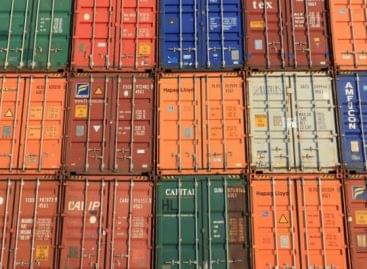GKI analysis: We can do something about economic vulnerability ourselves
The government’s “flying start” in 2025 would require a surge in exports (exports are 77.4% of GDP, while net exports are 6.8% of GDP). All this in circumstances where international trade is slowing down and the first signs of “Trumpism” are already visible on the horizon (e.g. tariff increases). We have previously shown what proportion of companies export. It turned out that domestically owned exporting enterprises are typically micro and small companies (there are hardly any large companies among them (1%)). Now we will examine domestic enterprises based on export revenue.
80% of the export revenue of Hungarian companies is generated by foreign-owned companies! While Hungarian companies have 6.6 thousand billion forints in revenue from such sources, foreign-owned ones bring in 27.3 thousand billion. By sector, the manufacturing industry dominates exports (and of course imports as well) by a huge margin (71%), followed by trade and services (24%), and energy and utilities (4%). Direct exports from both the construction industry and agriculture are small (less than half a percent of total exports). By company size, 71% of the value of exports comes from large companies, while the share of medium-sized companies is 18%. The weight of small and micro companies is 7% and 3%, respectively.
More than half (53%) of the exports of Hungarian majority-owned companies are accounted for by the trade and services sector. The energy and utilities group accounts for 19.5%, the manufacturing industry for 24%, and the weight of the construction industry and agriculture for 2% each. The vast majority (83%) of the export revenue of foreign-owned companies belongs to the manufacturing industry, followed by trade and services with 17%, and all other sectors account for less than 1%.
It is worth reviewing how exports are divided between domestic and foreign-owned companies by economic sector. Hungarian-owned companies dominate exports in energy and utilities (93%), construction (83%) and agriculture (71%). Foreigners dominate exports in trade and services (57%), but most of all in manufacturing (93%).
Related news
Univer is building on export-led growth
🎧 Hallgasd a cikket: Lejátszás Szünet Folytatás Leállítás Nyelv: Auto…
Read more >Hungarian exports are gaining new momentum: medium-sized companies are increasingly managing exchange rate risk and opening up to new markets
🎧 Hallgasd a cikket: Lejátszás Szünet Folytatás Leállítás Nyelv: Auto…
Read more >KSH: the foreign trade surplus in goods was 713 million euros in October; the volume of exports was 3.1 percent lower, and that of imports was 1.1 percent higher than in the same period of the previous year
🎧 Hallgasd a cikket: Lejátszás Szünet Folytatás Leállítás Nyelv: Auto…
Read more >Related news
Challenges of the retail sector: retail has become more crisis-resistant
🎧 Hallgasd a cikket: Lejátszás Szünet Folytatás Leállítás Nyelv: Auto…
Read more >NGM: conscious shopping for peaceful holidays, consumer protection advice for the Christmas period
🎧 Hallgasd a cikket: Lejátszás Szünet Folytatás Leállítás Nyelv: Auto…
Read more >How to avoid the hassles of online shopping?
🎧 Hallgasd a cikket: Lejátszás Szünet Folytatás Leállítás Nyelv: Auto…
Read more >






